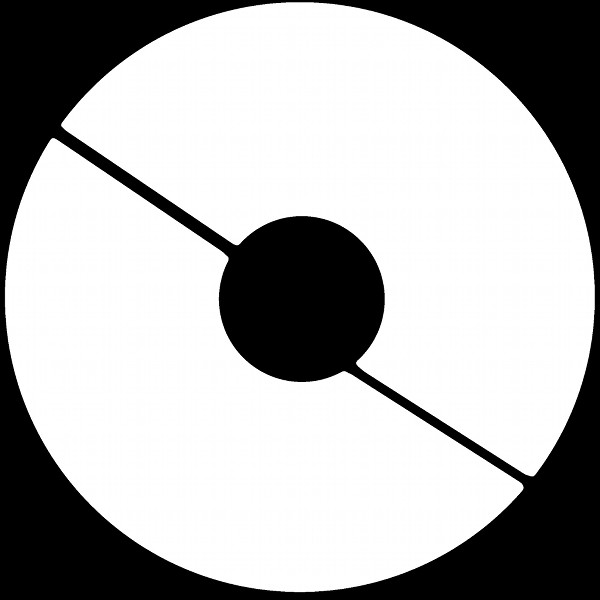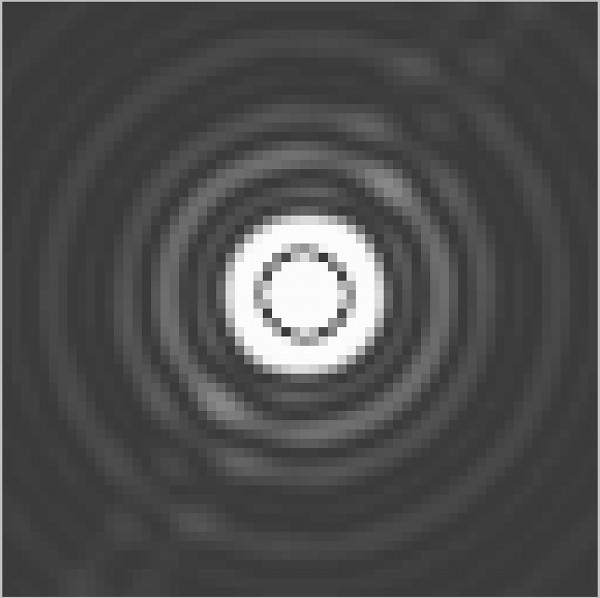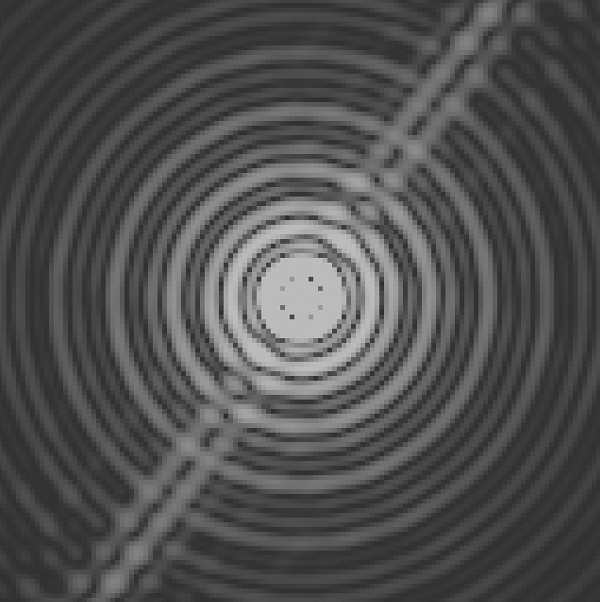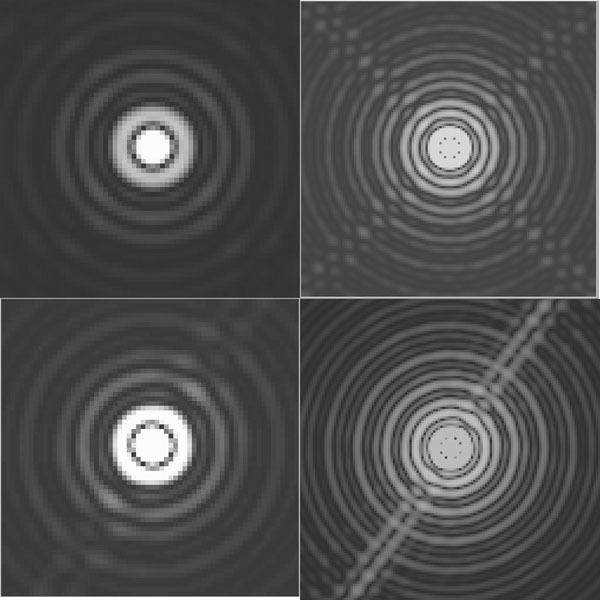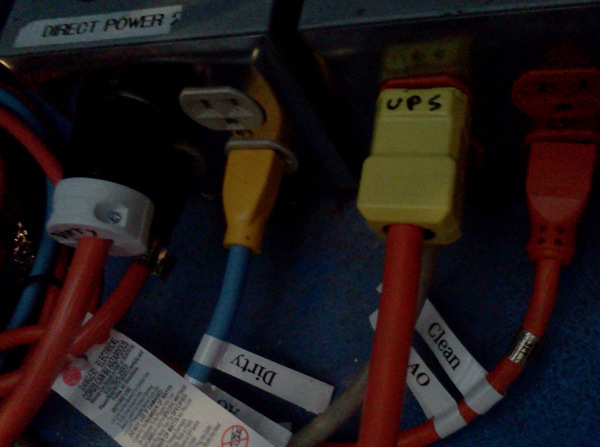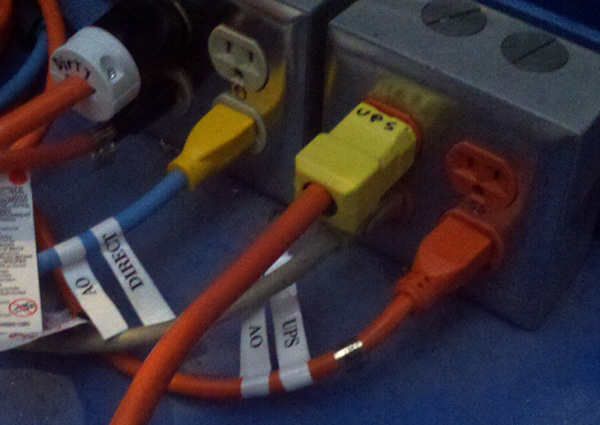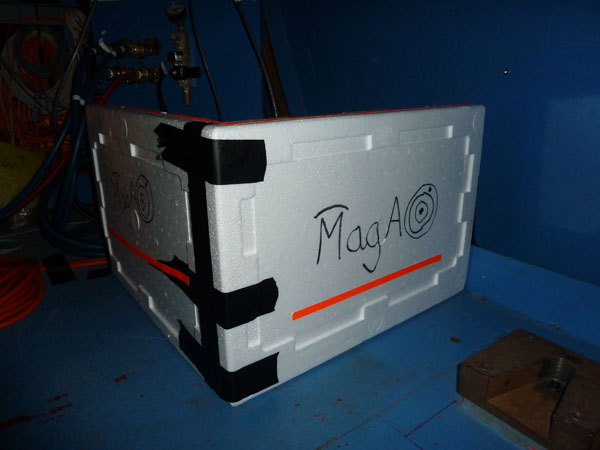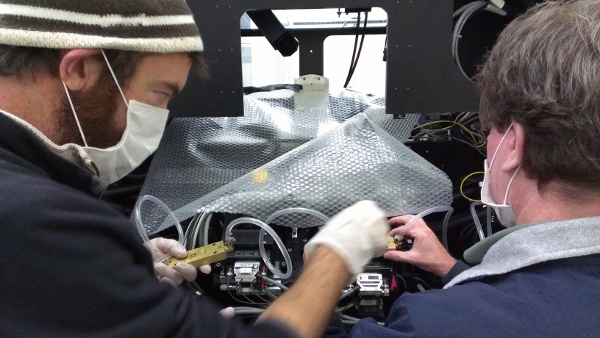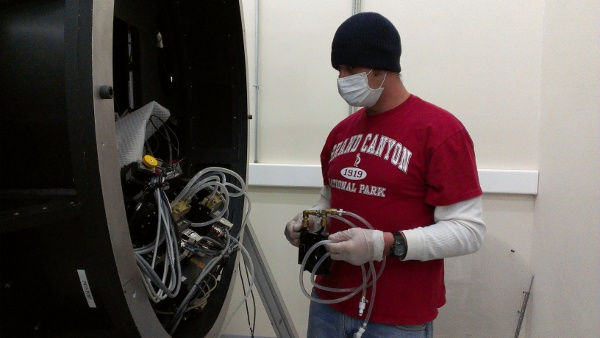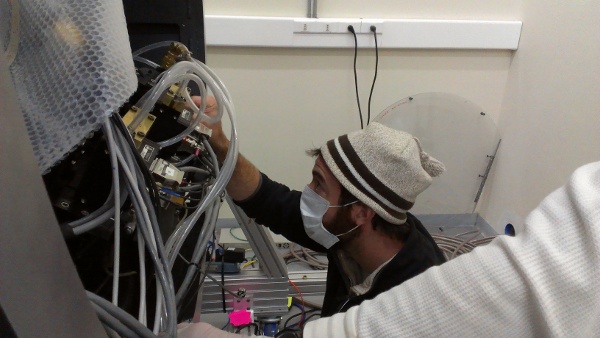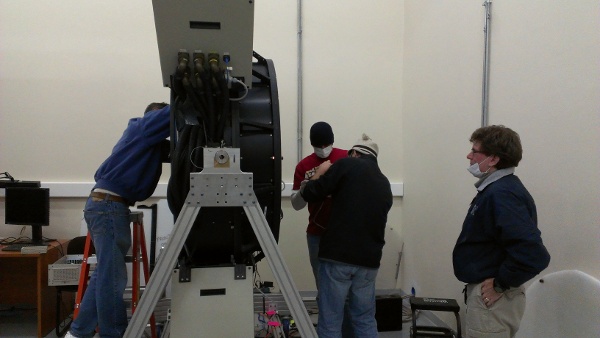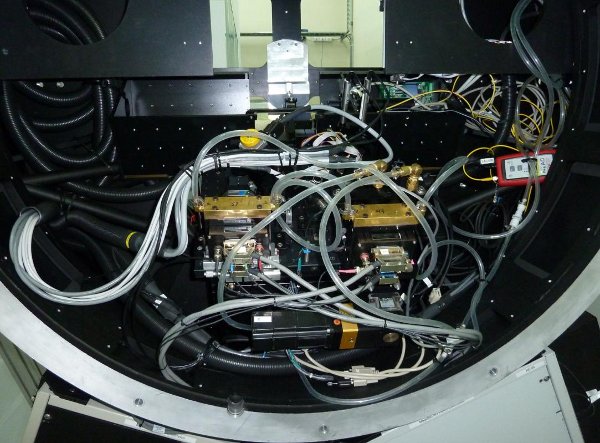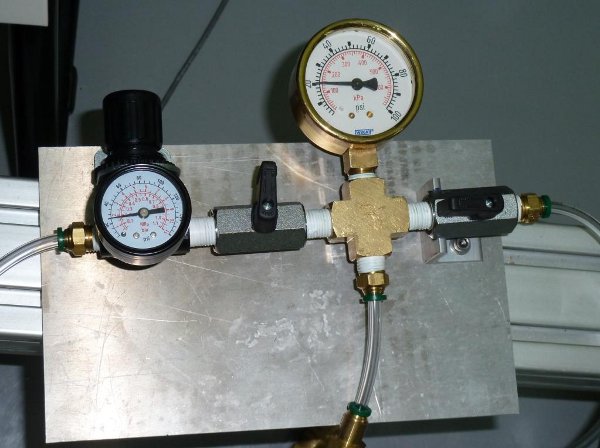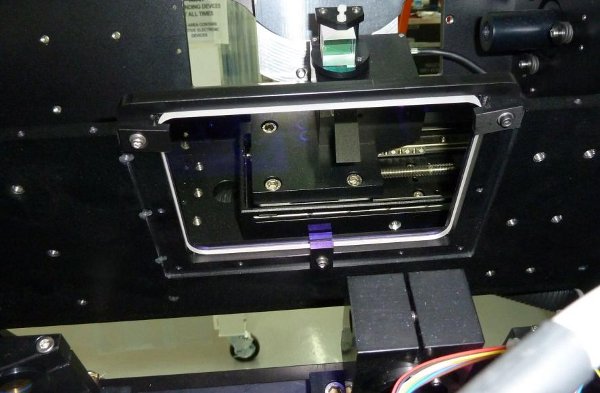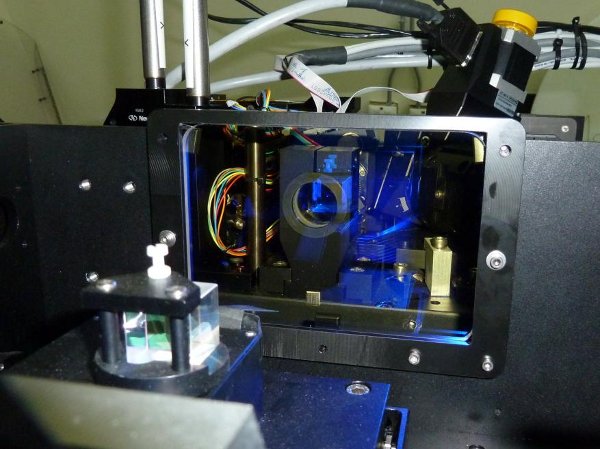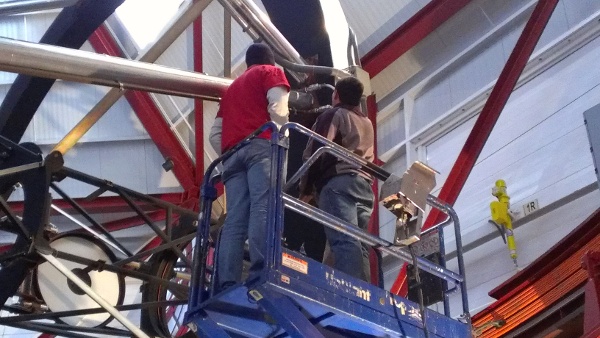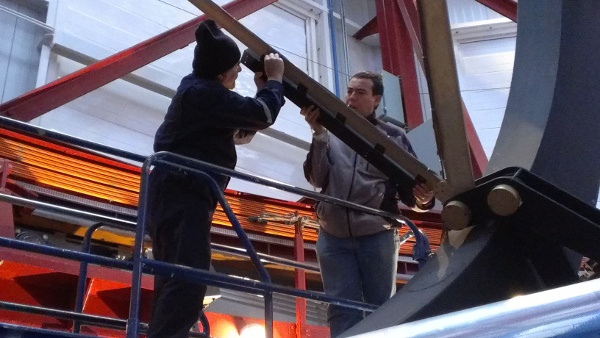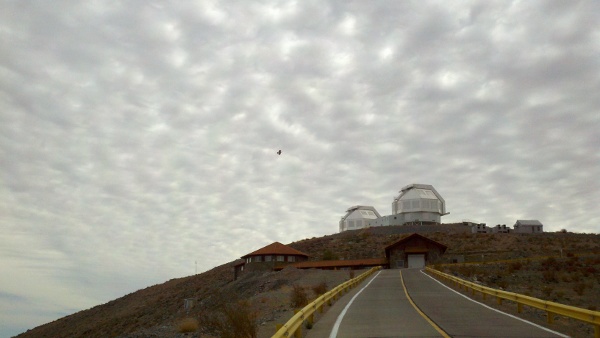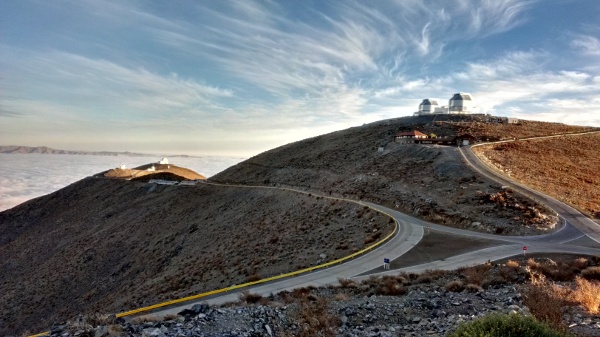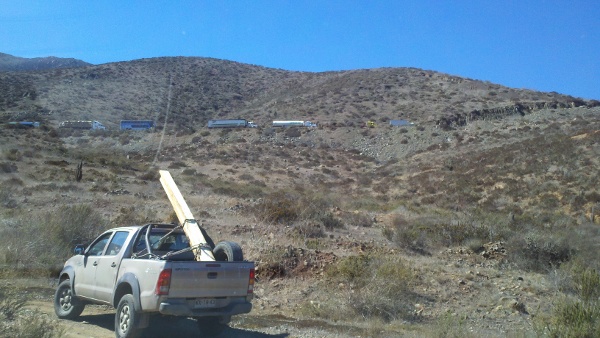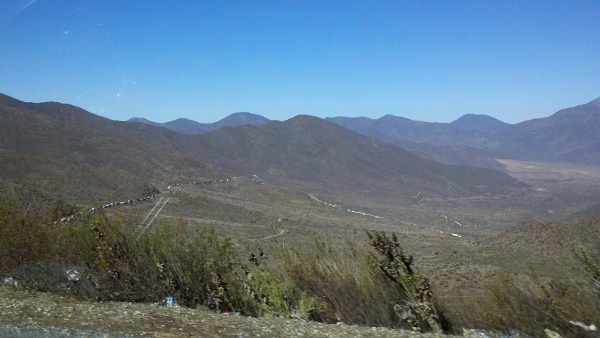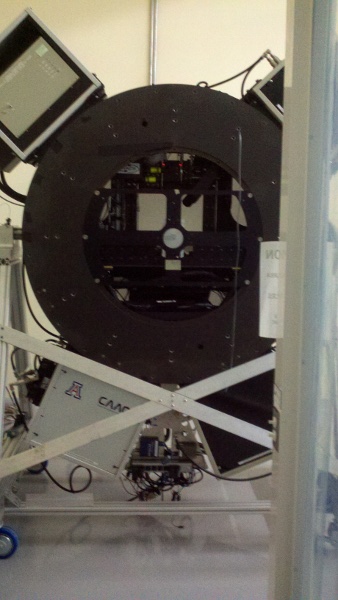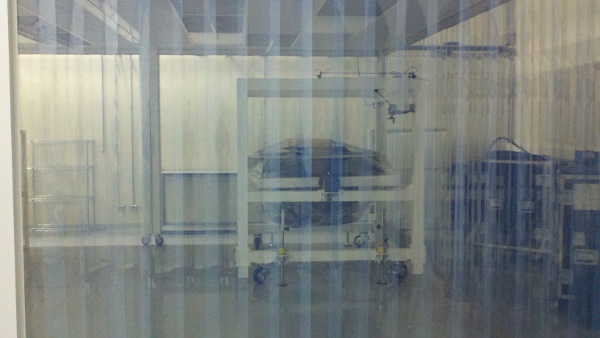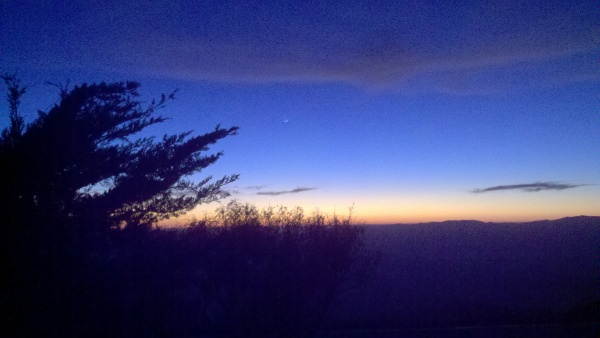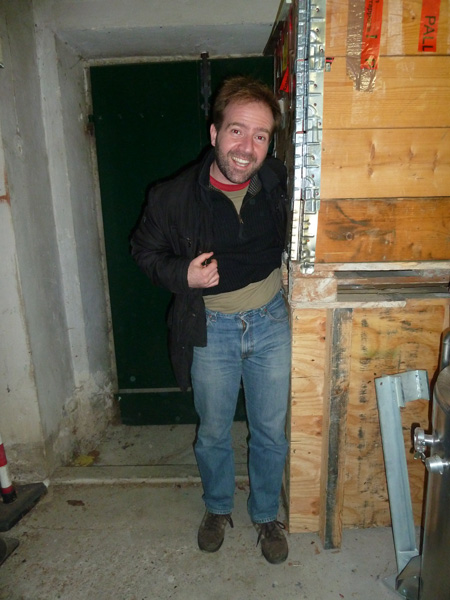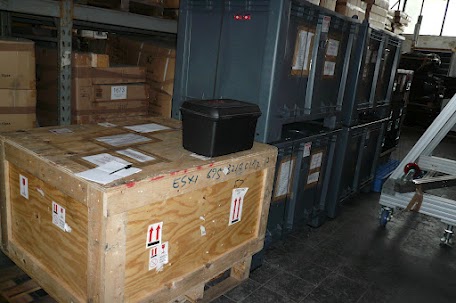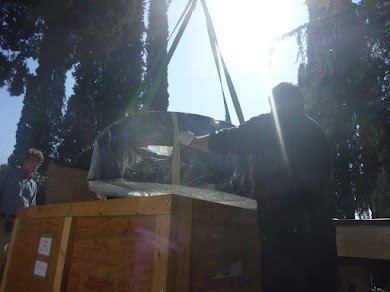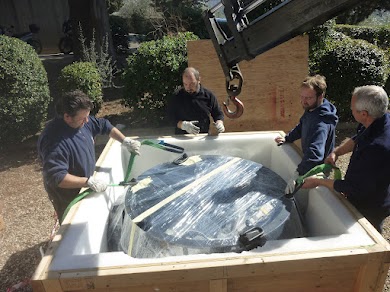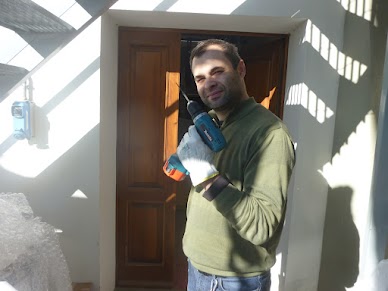Today we are going to explore the MagAO pupils and their corresponding transforms in the image plane, courtesy of Fourier optics.
So let’s have a look at the pupil. Here is a photo of the ASM, taken with a digital camera. This was from before Clio was mounted, so that we just stood on the Nasmyth platform and put the digital camera where Clio is now. The light source is the sky, and the light path is primary + secondary + tertiary.
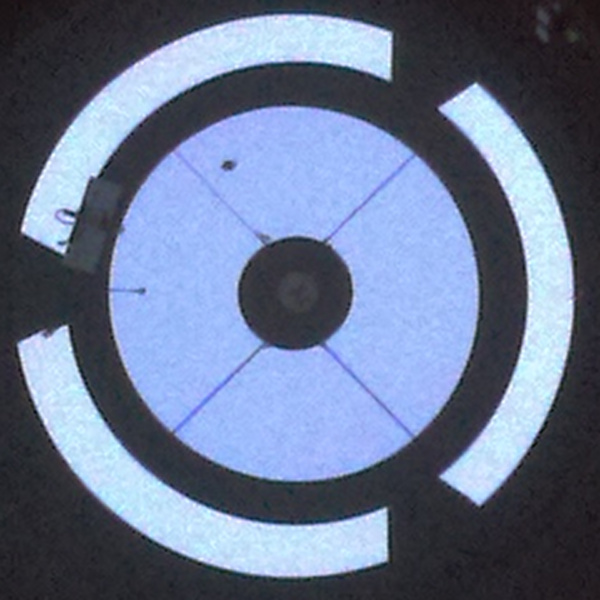
The main features of the pupil are the outer diameter of the mirror, the inner diameter of the secondary obscuration, the support spiders holding up the secondary, and the slot. Here, then, is the pupil mask:
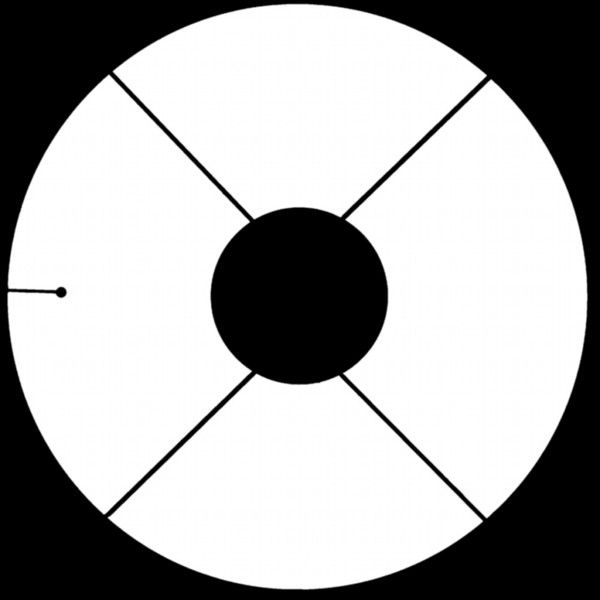
Since we know what the pupil looks like, we can create simulated images of the focal plane by taking the Fourier transform modulus squared:

If we really stretch the color table, you can see the diffraction off the spiders, but it is not a big effect. Also, I couldn’t find the diffraction off the slot, so it is negligible:
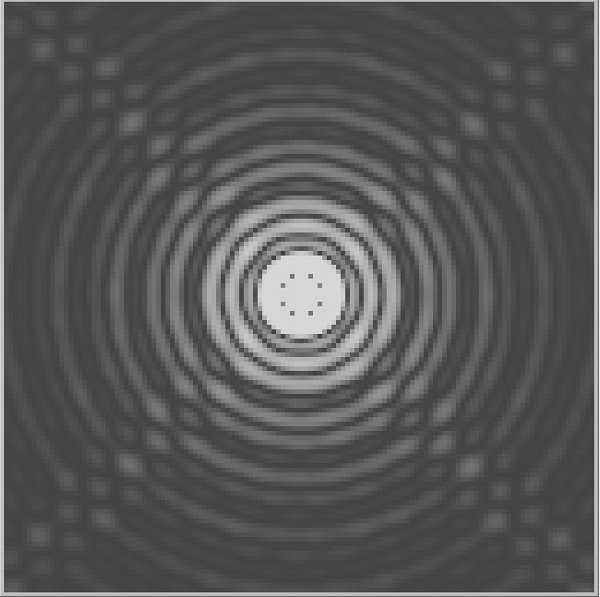
Now, Clio is an infrared camera, going out to 5 um, and so it has its own pupil mask, a cold stop. So let’s look at the pupil through Clio, by taking a pupil image (which we did after Clio was mounted). Here is an image of the pupil plane through the whole system, taken with Clio by putting in a powered lens to the focal plane to make a pupil image:
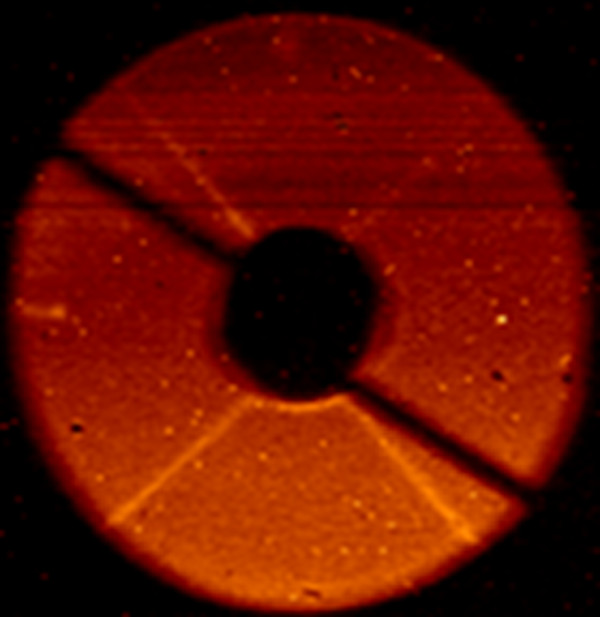
Clio pupil image, 3.4 um
